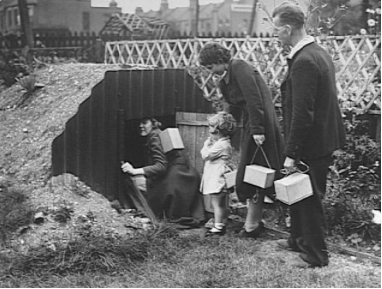The Blitz
- Leona B

- Jan 14, 2020
- 2 min read
Updated: Mar 28, 2020
The Blitz is what we call the mass night-bombing of many large cities including London from September, 1940 to May, 1941.
At 4.56pm on the 7th of September, families gathered supplies and rushed to their Anderson Shelters as the air raid sirens rung through London. Night after night, these Anderson Shelters hosted families of countless amounts, while the heavy and frequent bombing attacks persisted.
Over 350 bombers from the luftwaffe, the German Air Force, flew across the Channel and dropped 300 tonnes of bombs on the East End of London. By the end, about one third of London was destroyed.
Anderson Shelters, commonly known as Air Raid Shelters were built to house families during the Blitz. They weren't particularly fancy and usually made by their residents. They featured six crumpled iron sheets which were bolted together at the top, with steel plates at either end. An earth blast wall and a steel shield protected the entrance and would help the damage if a bomb was to fall on it. To disguise these shelters they were covered with moss, grass and mud and were often situated under things. The dirt would be very thickly packed and helped trap bomb splinters.
These genius little shelters saved uncountable lives and were well-designed on the inside too. Bunk beds were provided by the government with little escape hatches next to them. When a bomb hit, the shelter might alight in fire so a stirrup pump was always kept, just in case. Most people also brought suitcases full of valuables if a quick getaway was necessary. Finally, you had to bring food and home items such as clothes and possibly small toys for children.
If you were in the street when an air raid alarm rang out, the trains would stop so people could hide in train stations. Masses of people would huddle on the platforms and lie wearily on train tracks and pray for it to be over.
Countless people sent their children to the safety of the countryside to stay away from these air raids. Letters were the only way of communicating between mums and children, which would take about 4-6 days to arrive. But, telegrams would take about a day. Telegrams were made to be concise and straight to the point. Below, is a telegram which could've been from a mother to a child.











Comments